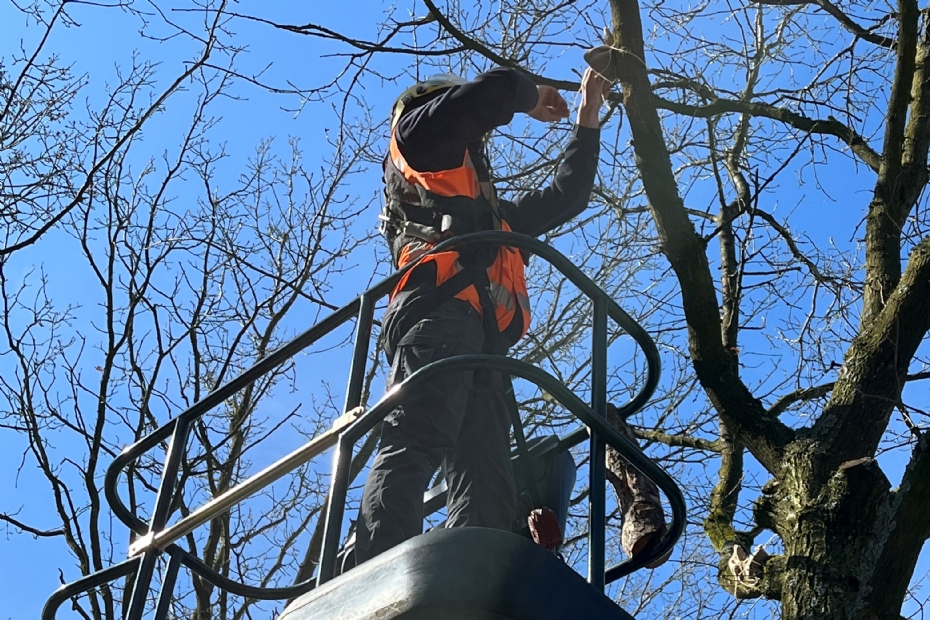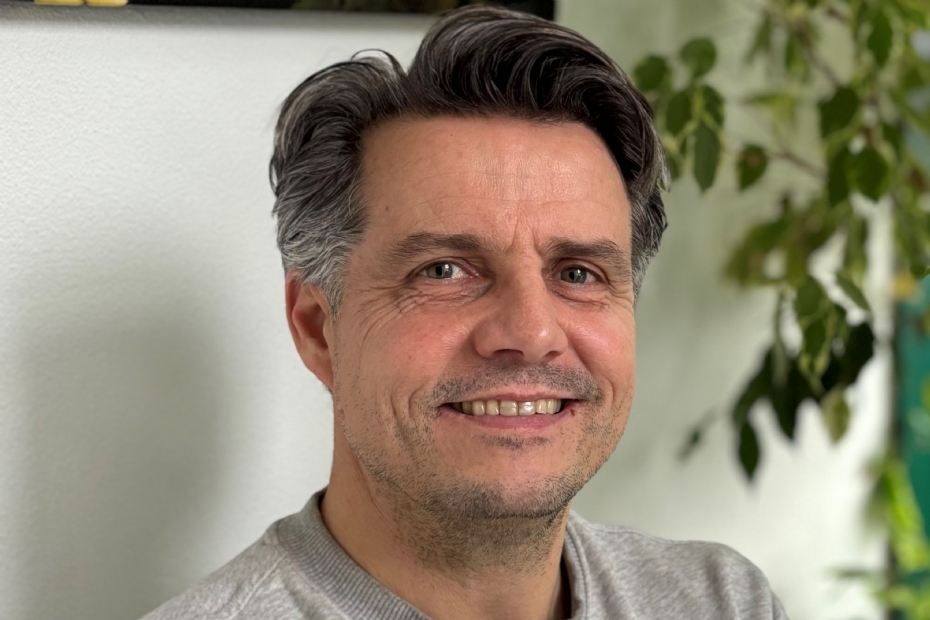Municipality of Breda has long chosen a natural approach to the Oak Processionary Moth |
|
|
|
|
 |
| 204 sec |
Not to Exterminate, but to Control
In 2018, 2019 and 2020 the infestation pressure of the oak processionary moth reached great heights. Many municipalities resorted to mechanical control, such as vacuuming out nests. Breda did the same. Gradually, the municipality's approach changed. "An oak processionary moth is also useful, and the tree is hardly affected by it."
| Roy de Kort (l) and Bram Zwikker, Municipality of Breda |
Bram Zwikker and Roy de Kort are both arboricultural advisors working for the Municipality of Breda. They walk us through the approach to dealing with the oak processionary moth, where, to name just one example, the use of nematodes or Xentari is out of the question. Even though these are biological agents.
Cost Control
Zwikker: "In 2019, we worked with two contractors in designated pilot areas, who were responsible for part of the natural control of the oak processionary moth in the Municipality of Breda. Brimex bv participated in this pilot. Our approach to the oak processionary moth at that time was entirely focused on mechanical and partly on natural control. Gradually, the mechanical approach was reduced and we shifted our focus to an ecological approach with natural enemies. More and more was learned about the ecological approach, such as the use of butterfly filter boxes. We focused on the long term and considered whether we might do something in the field of verge management. For that purpose, we initially set up a pilot at the Galderse Lakes, executed by Brimex bv."
Ecologically Valuable Summer Oak
Boudewijn Zandee of Brimex bv: "A summer oak is ecologically a very valuable tree. Approximately 1,200 organisms and 450 insects live on it. The summer oak is the most biodiverse tree we have in the Netherlands. That is why it is important to specifically target the pest insect without causing damage to the tree and the other insects."
Brimex maps both the pest and its life cycle as well as its natural enemies. Through the deployment of natural controllers, the balance in nature is restored. This does not mean that the oak processionary moth is completely eradicated, but only reduced to manageable numbers.
Long Term
What is striking about the Municipality of Breda's approach is the focus on the long term. A pest predominantly appears where there is no balance. By changing the environment or by deliberately releasing natural enemies—including providing them with housing—the balance is restored and nature solves the problem itself. With this approach, the oak processionary moth is given a place in the environment, but one that is manageable.
|
|
"When you bring the environment into balance, the oak processionary moth becomes manageable."
| |
|
De Kort: "Because we constantly focus on those long-term goals, we try to gradually move mechanical treatment into the background. Our approach is being transformed towards biological control. Brimex has been allocated budget space to, in addition to what they already do, also deploy innovative new products.
Zandee: "We started at the time with what we call the 360-degree approach. With this, we employ everything that is possible. Look, a moth has weak moments AND natural enemies, such as insects, but also bats. There are also many birds that feed on these caterpillars. To ensure that many natural enemies are present, we changed the environment. We established flower beds, installed housings, released natural enemies, and set up pheromone traps. Well, it doesn't get more comprehensive than that. This led to immediate results. Later, we scaled down this approach somewhat. We no longer set up pheromone traps; we do a lot with housings and flower beds."
Involving Education
Zandee used the existing interest and knowledge about the oak processionary moth to engage students from Curio in biological control. This initiative was encouraged by the Municipality of Breda. "We used the oak processionary moth as a tool to explain biological control, and it worked very well. We even developed lessons around it, thereby bringing together government, business, and education." In the spring, when the oak processionary moth begins its advance, the students join in and see the possibilities in practice.
Monitoring Progress
The Municipality of Breda has an inventory of 110,000 trees, of which approximately 25,000 are summer oaks. "We have been monitoring the peaks in infestation pressure for years," says Zwikker. "That way, we know where the hotspot locations are. Over three years, we have seen the pressure decrease. We still treat these locations, but mechanical control is no longer necessary at this moment. In this way, we continue to monitor each location and adjust as needed."
"The infestation pressure of the oak processionary moth follows a wave pattern," explains Zandee. "You see that the moth shifts towards the center and north of the country. But in principle, the moth can very easily return to the south. By maintaining the population of natural enemies and the continuously altered environment, it becomes much harder for the moth to come back."
Involving Residents
To determine the correct number of enemies needed, the trunk and crown diameters are measured. Then a tree is treated by releasing the enemies (mesh flies and a type of ladybird beetles) close to the pests: the caterpillars. These natural enemies are placed fresh, straight from refrigeration, in bags in the tree. They are then able to emerge and immediately find the oak processionary moth. The jute bags disintegrate. They are interwoven with mineral oils and cannot cause any damage. "We explain what we do on the street and at sports parks," says Zandee. "We knock on doors and show what we have done. People can let us know when something changes, and we ask if there is still any nuisance."
 | | Medewerkers van Brimex hangen een zakje met natuurlijke vijanden in de boom |
|
|
In addition to the measures for controlling the oak processionary moth, Brimex also controls the lime leaf aphid and the chestnut mining moth using natural controllers and materials. "We are aware that we had the moth with us again in recent years. We consciously take that into account in our monitoring," says Zwikker. "But we also see that Brimex's approach works. Boudewijn is a fine, passionate person and his story is no-nonsense, but it is simply true."
 | | Boudewijn Zandee of Brimex |
|
|
This article was previously published on March 13, 2025 on the website of Boomzorg.
| LOG IN
with your email address to respond.
|
|
|
| There are no comments yet. |
Tip the editors
|
| |
Anyone can place small ads for free through their own account.
Place a free ad
|
|
|
|